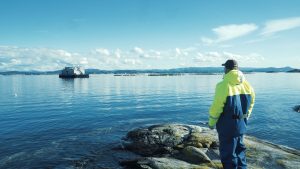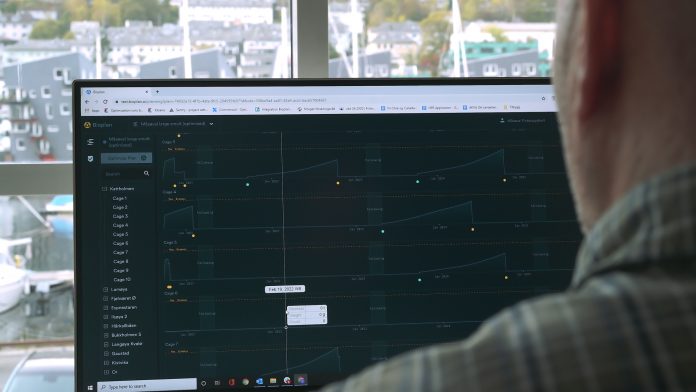Combining AI, machine learning and mathematical optimisation to drive the transition from experience-driven to knowledge-driven salmon farming
Salmon farming, typically considered to be at the forefront of modern aquaculture in terms of the level of industrialisation and technology advancement, has evolved to become a large and comprehensive marine industry characterised by significant dynamics and complexity. Operational planning requires handling considerable amounts of data – data describing the fish population with individual count, size, growth rate, health conditions, environmental conditions, operational conditions, and market and logistic conditions.
Data
The large amounts of data that are generated have a high potential value if it is connected and processed in the right way. However, few tools are available to realise this potential. Indeed, decisions are typically made by using a combination of gut feeling and experienced-based reasoning using simple tools. Specifically, short-term planning for salmon farming is predominantly done manually in spreadsheets. The complexity of decisions overwhelms such tools and forces a simplification of factors that impact production.
Considering the complexity and high stakes of this problem, more dynamic and specially-designed tools have the potential to significantly increase efficacy and precision. The current COVID-19 crisis is a good example of how sudden and unpredicted events can disrupt harvest capacity, markets, and distribution channels, requiring farmers to replan their production. Replanning using existing tools is time consuming, and potential better planning options are left unexplored due to time constraints in the fast paced and rapidly changing day-to-day process that is salmon farming.
Introducing AI to salmon farming
Optimeering Aqua, together with its partners the Norwegian School of Economics, the salmon farmer Cermaq, sensor drone supplier SeaSmart, and boat tracking company Anteo, aims to solve this challenge by distilling the information without oversimplifying causal effects.
In a new project funded by the Norwegian Research Council entitled ‘Optimal risk-based decision making for aquaculture’, Optimeering Aqua and its partners will gather high quality data from production which will be used to build forecast models using machine learning. These forecasts will then be used in a mathematical optimisation model to provide specific recommendations for actions.

Mathematical optimisation
Mathematical optimisation is machine learning’s lesser known AI-cousin. It allows the key features of a complex real world problem to be captured as an optimisation model. An optimisation model is comprised of relevant objectives (such as business goals), variables (such as decisions which are within your control) and constraints (such as business rules) to recommend a solution that generates the best possible result.
Like machine learning, mathematical optimisation has greatly benefited from advances in computing speed, which has allowed for more realistic and relevant optimisation models to be generated. The new research project will extend Optimeering Aqua’s current decision support software Bioplan, which is based on mathematical optimisation, and empower it with quality data and forecasts created with the help of machine learning. The novel approach of merging two distinct AI disciplines – machine learning and mathematical optimisation – will be used to assist fish farmers to better follow the practice of precision fish farming. That is, they will be able to make decisions on each fish group in a unique manner based on the unique historical and expected future performance of each specific fish group.
The project focuses on supporting the decision-making process for the last stage of the production cycle of each fish group. On average, some 7,000 metric tonnes of farmed salmon are harvested globally every day at a daily value close to €40m. As farmed salmon reaches its peak value towards the last part of the production cycle, the downside risk also increases as a result of possible biological issues typically being more prevalent in older fish.
This increases the importance of a tool that can quickly support farmers in taking data- and knowledge-driven decisions. Planning at this stage involves complex multifactorial assessment, where the potential gain from precise forecasting is considerable in all aspects, and Optimeering Aqua will help farmers to achieve that.
Erlend Torgnes
Co-Founder and CEO
Optimeering Aqua AS
+47 90842942
erlend.torgnes@optimeeringaqua.com
www.linkedin.com/company/optimeering-aqua
www.optimeeringaqua.com
Please note, this article will also appear in the fourth edition of our new quarterly publication.







